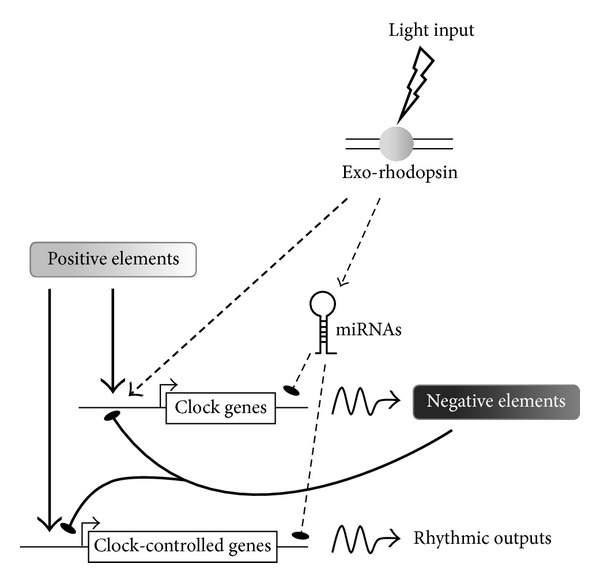Figure 2.

Model of the regulation of the molecular clockwork in the zebrafish pineal gland by light. Light input is perceived by exo-rhodopsin at the cell membrane and relayed to the nucleus by signal transduction pathways. The light signal upregulates the expression of negative elements in the clockwork circuitry. In addition, light-induced miRNAs contribute to the generation of transient expression profiles of clock and clock-controlled target genes. Arrows indicate activation; lines with flat end indicate inhibition.
